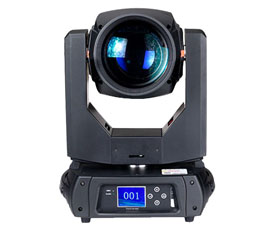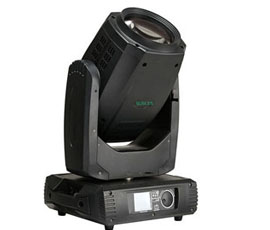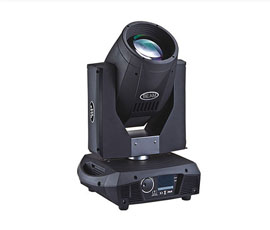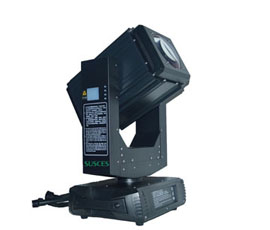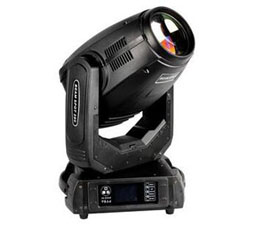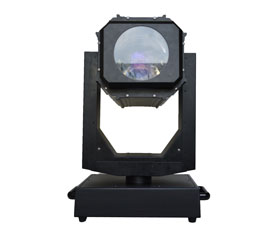
What are the aspects of the anti-corrosion technology?
At present, peoples growing demand for cultural tourism; in order to meet this demand, a large number of theme parks should be built. These large-scale theme parks are generally set up various types of performing arts facilities, many of them large-scale real show show. There are a lot of stage machinery and equipment in the show, most of which are open-air installations, and a large number of equipment installed directly in the water, even in the sea. Although these water equipment can use stainless steel and other corrosion-resistant materials, but because of the cost of the reasons (corrosion-resistant materials, the cost of equipment is about 5 times the ordinary carbon steel), the general large-scale stage machinery and equipment are made of ordinary structural metal profiles, Of the working environment so that the corrosion of these devices is much greater than the indoor dry environment used in the equipment. In addition, in recent years, large-scale theme parks in the coastal areas have been emerging, many of the equipment directly soaked in seawater, in the sea water equipment in the use of more harsh environment, corrosion is very serious. It can be seen that the anti-corrosion treatment of the performing arts equipment is a vital part in the use and protection of the stage machinery. The author combined with the company in recent years to complete a number of large-scale real show show, for the use of equipment environment and anti-corrosion measures to talk about the ship anti-corrosion technology in the stage of performing equipment, anti-corrosion applications.
1 protection of equipment corrosion
There are two main ways of metal corrosion, that is, coating protection and electrochemical protection.
1.1 Coating protection
Coating protection for metal equipment, is one of the most widely used, the oldest, but also the most economical, convenient and effective protection methods. Coating protection is coated with anti-corrosion coating or coating on the surface of the steel structure, so that the formation of a complete, dense coating to isolate the various parts of the steel surface and the outside corrosive environment. Coating protection can be divided into two major categories of coating coating protection and coating coating protection. Coating coating protection, including paint, spray, etc .; coating coating protection, including galvanized, chrome and so on. With the continuous development and application of new materials, and now there have been fluorocarbon, polyurea, Dacromet and other new anti-corrosion coating materials.
1.1.1 Coating process requirements
The effective life of the anticorrosive coating on the steel surface is related to the surface treatment, the type of coating, the thickness of the coating and the process conditions of the coating. Many of the factors such as the surface treatment quality of the steel before coating are the protective properties of the coating The main factors are shown in Table 2. Steel surface treatment methods are: raw material shot blasting pretreatment and coating workshop shot peening or pickling, phosphating, primer treatment.
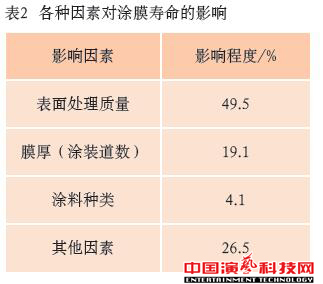
1.1.2 Effect of coating protection
General wet environment, outdoor and fresh water immersed in the environment of the performing arts equipment can be used to protect the protective coating method, as long as the strict requirements of the construction process, and in the lifting, transportation and installation process to pay attention to the protection of the surface coating equipment can be achieved Anti - corrosion requirements. The author of the company involved in the design of a film and television city show floor of the water lift stage, the use of ordinary carbon steel and marine paint for protection, that is, the choice of suitable ship special coating to ship coating process requirements for construction, equipment used two years Steel surface is basically no corrosion, access to a good anti-corrosion effect, as shown in Figure 2.
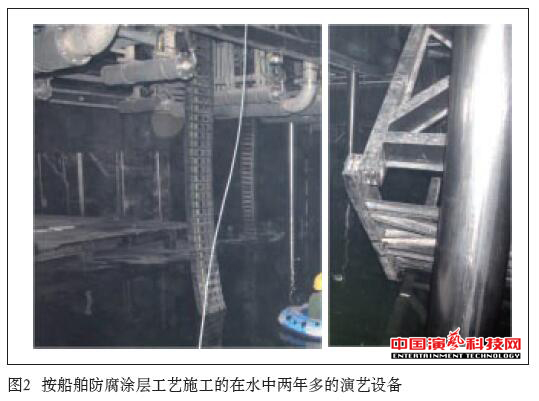
1.2 Electrochemical protection
Electrochemical protection is also known as cathodic protection. There are two kinds of cathodic protection methods, namely sacrificial anode cathodic protection and external current cathodic protection. Which sacrificed anode cathodic protection, also known as passive protection; plus current cathodic protection, also known as active protection. These two electrochemical protection methods are widely used in the protection of marine shell and dock steel structures.
1.2.1 sacrificial anode cathodic protection
Sacrificial anode cathodic protection is the need to protect the steel structure of the equipment to fix some of the metal as an anode, such as metal aluminum, zinc, magnesium and its alloys. Since the chemical properties of these metals and alloys are more active than iron, the electrons are more likely to lose electrons under the action of electrolytes (seawater) and exhibit high potential (anode), so that a slight difference between the metal material and the protected steel structure Batteries in which the anode is accelerated by oxidative corrosion and the surface of the cathode (steel) is protected by anodic electron stacking, which greatly slows the corrosion of the steel structure. Sacrificial anode cathodic protection can use aluminum alloy anode or zinc alloy anode, the chemical composition of its material, electrochemical properties must be strictly in accordance with national standards GB / T 4948-2002 "aluminum - zinc - indium alloy sacrificial anode" and GB / T 4950 -2002 "Zinc-Aluminum-Cadmium Alloy Sacrificial Anode". Table 6 lists the chemical composition and electrochemical properties of the anode material.
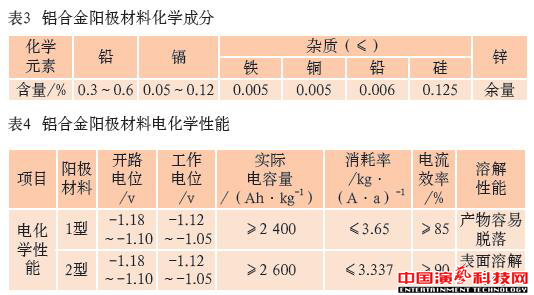

表5 鋅合金陽極材料化學(xué)成分
 Table 6 Zinc alloy anode material electrochemical properties
Table 6 Zinc alloy anode material electrochemical properties
1.2.2 Applied current cathodic protection
The applied current cathodic protection is the addition of a constant potential during the sacrificial anode cathodic protection. The applied potential is called the protection current by applying the applied potential to the protected potential field. The size of the protective current is directly related to the surface area of the metal structure to be protected, usually using the protection current value per unit area - the protection current density as the representation, and Figure 3 shows the cathodic protection principle. The corrosion rate of steel in quiescent seawater is generally 0.1 mm / year, assuming it is a constant uniform corrosion, according to the theoretical calculation, the corrosion current density of 0.086 A / ㎡. The experimental results show that in the static seawater, the protection of steel current density of 0.1 A / m2? 0.15 A / ㎡. This is consistent with the theoretical requirement that the protection current must be greater than the concept of corrosion current. The hull of the external current cathodic protection system, generally by the potentiostat, auxiliary anode, anode shielding layer, the reference electrode and so on. Constant potentiometer is a high-performance DC power supply, generally also a good collection of man-machine interface, automatic control functions, self-detection and abnormal alarm and other functions. Auxiliary anode is an important component, its role is to protect the current through the sea water to the metal surface, the effect is equivalent to replace the metal electrochemical corrosion. The anodic shield is an insulating coating covering a certain area around the auxiliary anode so that the output current of the anode can be distributed to the far cathode surface so that the metal potential distribution is uniform. The reference electrode is mainly for the potential potentiometer to provide automatic control with the metal potential signal, but also for the man-machine interface to provide cathodic protection effect of the signal.
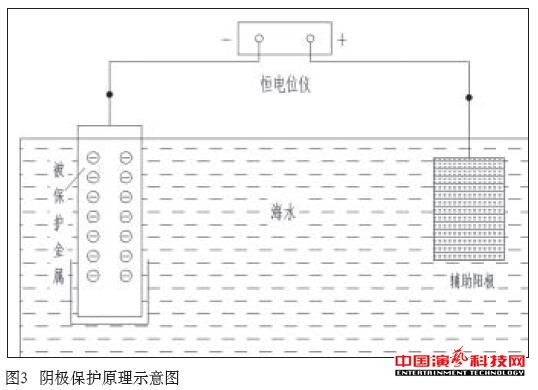
For exposure to the seaside and long-term immersion in seawater in the performing arts equipment, due to the strong corrosion of seawater and salt spray, only with the coating protection is clearly not enough. To this end, the use of coating protection plus electrochemical protection of the comprehensive protection method. Among them, for exposure to the seaside or seawater splash (spray) of the performing arts equipment, the use of sacrificial anode cathodic protection of electrochemical protection measures to protect the effect is obvious; and for long-term immersion in seawater in the performing arts equipment, you should use the external current cathodic protection Of the electrochemical protection measures to protect the effect better. The company where the author had given a seaside show field to create large-scale performing arts equipment, set the seawater fountain, in order to better protect the equipment to slow down the corrosion, in the design and manufacture of the use of sacrificial anode cathodic protection of electrochemical protection measures, as shown in Figure 4 As shown. Facts have proved that for the seaside or semi-dry environment used in the performing arts equipment, sacrificial anode cathodic protection measures played by the anti-corrosion protection is very significant. Figure 5 is a comparison of corrosion and protection of unprotected steel structures after two years of use in the same environment.
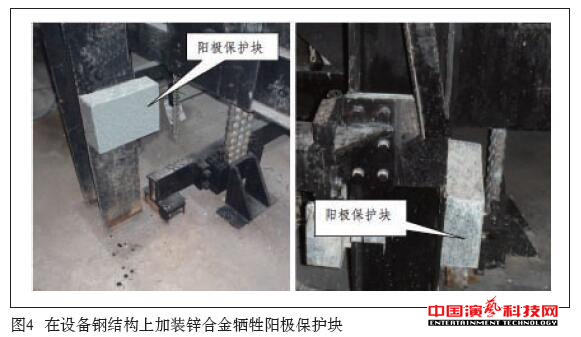
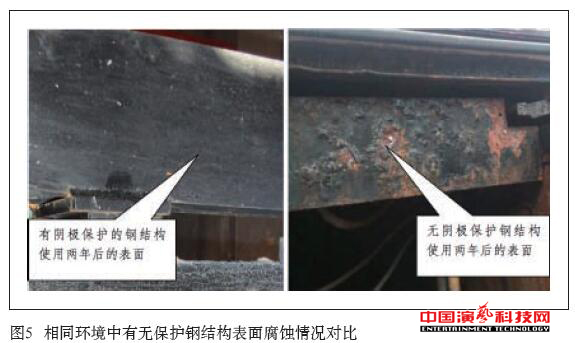
n the seawater immersion of performing arts equipment should be more appropriate to use the current cathodic protection measures, as long as the appropriate location to install a number of auxiliary anode, control the size of the protection of the current, you can achieve a satisfactory protective effect. However, in the seawater environment, in addition to the erosion of sea water and marine erosion, so the protection of these equipment is also very important. Traditional paint coatings are difficult to prevent the attachment and erosion of marine organisms, and in recent years has been widely used polyurea anti-corrosion coating can effectively prevent the attachment of marine life. If conditions permit, polyurea coating can be installed in the equipment after the completion of spraying, spraying should pay attention to as much as possible and eliminate dead ends. Through the protection of the coating and the protection of the current cathodic protection, often in the seawater immersion of the performing arts equipment life can be greatly extended, generally can use 5? 10 years, really play a multiplier effect.
From the "Performing Arts and Technology" 2016 No. 3 Yin Wencheng, Zhang Shanyong, Huang Yuanle, Li Qiang, Liu Guangwei, Wu Jin "on the anti-corrosion technology in the stage machine application"
